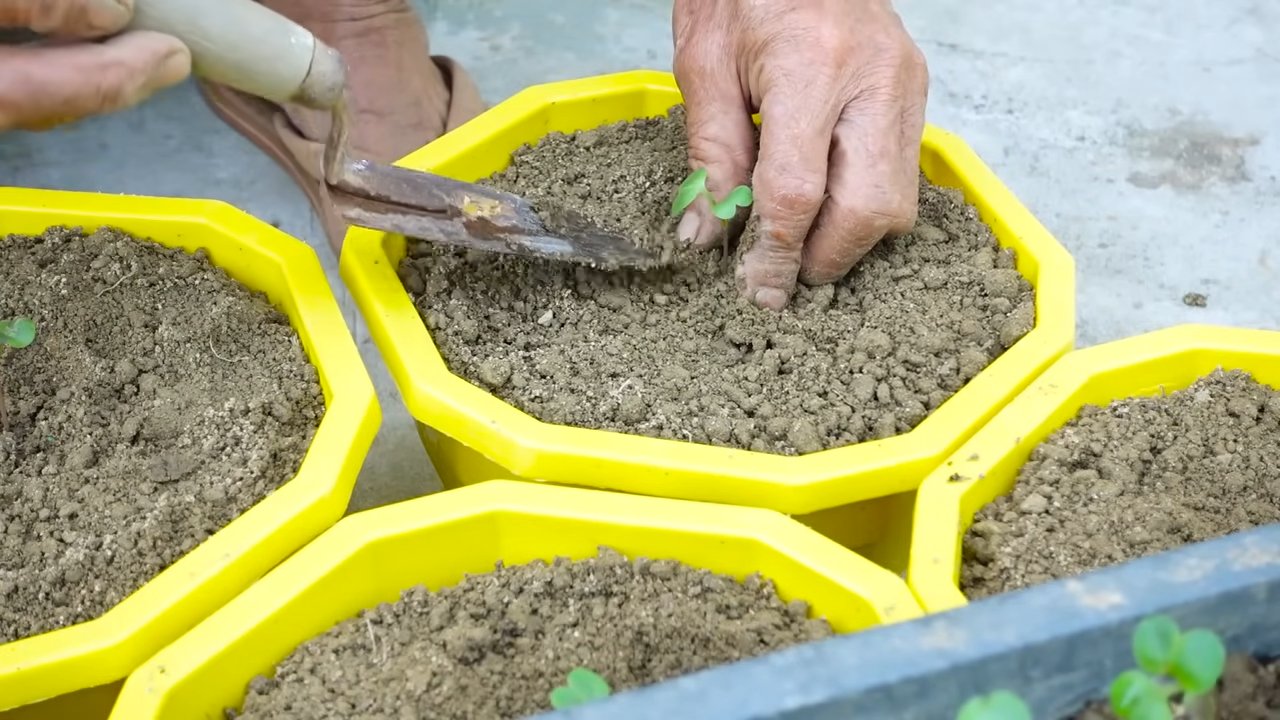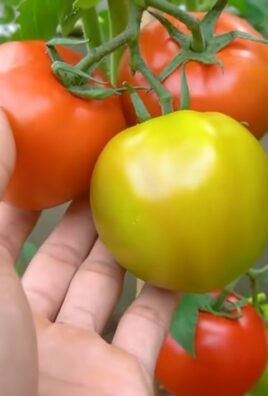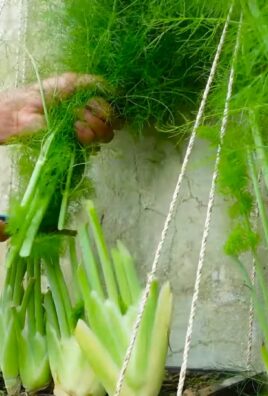Growing Pink Radish at home can be surprisingly easy and rewarding! Imagine pulling vibrant, crisp, and peppery pink radishes straight from your own garden – a delightful addition to salads, snacks, or even a colorful garnish. But let’s be honest, sometimes getting those perfect, plump radishes feels more like a gamble than a sure thing. Have you ever ended up with tiny, bitter, or cracked radishes despite your best efforts? I know I have!
Radishes, with their quick growth cycle, have been a staple in gardens for centuries. Originating in Asia, they’ve been cultivated since pre-Roman times and were even a favorite snack of the ancient Egyptians! Their ease of cultivation made them a valuable and accessible food source for many cultures. Today, we can tap into that rich history and bring the joy of fresh, homegrown radishes to our own tables.
That’s why I’m so excited to share these simple yet effective DIY tricks and hacks for growing pink radish successfully. Whether you’re a seasoned gardener or just starting out, these tips will help you avoid common pitfalls and maximize your harvest. We’ll cover everything from soil preparation and seed spacing to watering techniques and pest control, ensuring you get the most delicious and visually stunning pink radishes possible. Get ready to impress your friends and family with your homegrown bounty!

Growing Pink Radishes Yourself: A DIY Guide for Beginners
Hello garden friends! I love harvesting fresh, crisp radishes directly from my garden. And pink radishes are not only delicious but also a real eye-catcher! In this article, I’ll show you how you can easily grow pink radishes yourself – even if you have no experience yet. Don’t worry, it’s really child’s play!
What You Need for Growing Pink Radishes
Before we get started, here is a list of everything you’ll need:
- Radish seeds (pink variety): Make sure you buy fresh seeds.
- Good soil: Preferably loose and rich in humus.
- A garden bed or planter: Depending on how much space you have.
- A rake: To level the soil.
- A dibber or your finger: To make the seed furrows.
- A watering can or a garden hose with a spray head: For watering.
- A little patience and love: The most important thing!
Step-by-Step Guide: How to Plant Pink Radishes
Here comes the detailed guide, so that nothing can go wrong:
- Choosing the right location: Radishes love the sun, but a semi-shady spot is also fine. It’s important that the soil is well-draining and not prone to waterlogging.
- Preparing the soil: Loosen the soil with a rake. Remove stones and weeds. If you have very clayey soil, you can mix in some sand or compost to make it more permeable.
- Making seed furrows: With a dibber or your finger, you now make seed furrows in the soil. The furrows should be about 1-2 cm deep and have a distance of about 10-15 cm from each other.
- Sowing the seeds: Distribute the radish seeds in the seed furrows. Make sure the seeds are not too close together, as the radishes will not have enough space to grow otherwise. A distance of about 2-3 cm between the seeds is ideal.
- Closing the seed furrows: Gently cover the seeds with soil and press them down lightly.
- Watering: Water the soil gently so that it is well moistened. Avoid washing out the seeds.
- Being patient: Now it’s time to wait! Radishes usually germinate within a few days. Keep the soil moist, but not wet.
Caring for the Radishes: How They Stay Healthy and Crisp
After sowing, proper care is crucial for a bountiful harvest. Here are a few tips:
- Water regularly: Radishes need sufficient water, especially during germination and growth. It’s best to water in the morning or evening to avoid evaporation.
- Remove weeds: Keep the bed or planter free of weeds so that the radishes don’t have to compete for nutrients.
- Thinning (optional): If the radishes are too close together, you can thin them out by removing some plants. This gives the remaining plants more space to grow.
- Protecting from pests: Radishes can be infested by various pests, such as flea beetles or slugs. Check the plants regularly and take measures if necessary. A net can help protect the plants from pests.
Harvest Time: When are the Pink Radishes Ripe?
This is the most exciting part! Radishes are very fast-growing and can often be harvested after just 3-4 weeks.
- Size: The radishes should be about the size of a marble or a ping-pong ball.
- Firmness: Press lightly on the radishes. They should feel firm.
- Color: The pink color should be strong and uniform.
When the radishes are ripe, you can gently pull them out of the ground. Twist them slightly to avoid damaging the roots.
Common Problems and Solutions
Problems can also arise with radish cultivation. Here are some common problems and how you can solve them:
- Radishes don’t get big: This can have various causes. Either the soil is too poor in nutrients, the plants are too close together, or they are not getting enough water. Fertilize the soil with some compost or organic fertilizer, thin out the plants, and water regularly.
- Radishes are spicy: This can be because they were in the ground for too long or received too little water. Harvest the radishes on time and ensure adequate watering.
- Radishes are worm-eaten: This is usually due to flea beetles. Protect the plants with a net or treat them with a biological insecticide.
- Radishes crack: This happens when they suddenly get a lot of water after a dry period. Water regularly and avoid extreme fluctuations in soil moisture.
Extra Tips for an Even Better Harvest
Here are a few more tips that will help you achieve an even better harvest:
- Direct sowing vs. starting indoors: Radishes are usually sown directly into the bed. Starting them indoors is not necessary.
- Practice crop rotation: Do not plant radishes in the same location every year to prevent diseases and pests.
- Companion planting: Radishes get along well with other vegetables like carrots, lettuce, or spinach.
- Variety: There are many different varieties of pink radishes. Try different varieties to find out which ones you like best.
Growing Radishes in Pots: How to Do It on the Balcony
No garden? No problem! You can also easily grow pink radishes in pots or balcony boxes.
- Choose the right pot: The pot should be at least 15 cm deep and have drainage holes so that excess water can drain away.
- Use good soil: Fill the pot with a high-quality potting soil or a mixture of garden soil and compost.
- Sowing: Sow the radish seeds in the pot as described above.
- Care: Water the radishes regularly and fertilize them with a liquid fertilizer if necessary.
- Location: Place the pot in a sunny or semi-shady spot.
Radishes in the Kitchen: Versatile Uses
Radishes are not only delicious but also very healthy. They contain many vitamins and minerals.
- Raw: Radishes taste best raw, for example in a salad, on bread, or as a snack in between.
- Grilled or fried: Grilled or fried radishes are also a delicacy.
- In soups and stews: Radishes can also be used in soups and stews.
- Radish leaves: The leaves of the radishes are also edible and can be used, for example, in a salad or as a pesto.
I hope this guide has helped you and that you will soon have your own pink radishes in your garden or on your balcony! Happy gardening

Conclusion
So, there you have it! Growing pink radishes at home is not only achievable but also incredibly rewarding. Forget bland, store-bought radishes that lack that vibrant peppery kick. With this simple DIY trick, you can cultivate your own crop of crisp, colorful, and intensely flavorful pink radishes, bursting with freshness and ready to elevate your salads, snacks, and side dishes.
Why is this a must-try? Because it puts you in control. You dictate the quality of the soil, the amount of sunlight, and the watering schedule, ensuring that your radishes are grown organically and to your exact specifications. Plus, there’s an undeniable satisfaction in harvesting something you’ve nurtured from seed to table. It’s a connection to nature, a lesson in sustainability, and a delicious way to add a pop of color and flavor to your meals.
But don’t stop there! Experiment with different varieties of radish seeds to discover your personal favorite. Try French Breakfast radishes for a milder flavor, or Watermelon radishes for a stunning visual contrast. You can also adjust the growing conditions to influence the radish’s spiciness. Shorter growing times and cooler temperatures generally result in milder radishes, while longer growing times and warmer temperatures can intensify the peppery bite.
Consider companion planting your pink radishes with carrots or lettuce. These plants can help deter pests and improve the overall health of your garden. You can also use the radish greens in salads or stir-fries for an added nutritional boost. Don’t let any part of the plant go to waste!
We’ve provided you with the knowledge and the tools; now it’s time to get your hands dirty. Grab some seeds, prepare your soil, and embark on your own pink radish growing adventure. We’re confident that you’ll be amazed by the results.
And most importantly, we want to hear about your experience! Share your photos, tips, and tricks in the comments below. Let us know what worked for you, what challenges you faced, and what delicious dishes you created with your homegrown pink radishes. Your feedback will not only inspire others but also help us refine and improve this guide for future gardeners. So, go ahead, give it a try, and let’s grow some amazing pink radishes together!
Frequently Asked Questions (FAQ)
What is the best time of year to plant pink radishes?
Radishes are cool-season crops, meaning they thrive in cooler temperatures. The best time to plant them is in early spring or late summer/early fall. In spring, plant as soon as the soil can be worked. For a fall harvest, sow seeds about 4-6 weeks before the first expected frost. Avoid planting during the hottest months of summer, as the heat can cause the radishes to bolt (go to seed) and become bitter.
How much sunlight do pink radishes need?
Pink radishes need at least 6 hours of sunlight per day. While they can tolerate some shade, especially during the hottest part of the day, insufficient sunlight can result in smaller, less flavorful radishes. Choose a location in your garden that receives ample sunlight throughout the day.
What kind of soil is best for growing pink radishes?
Radishes prefer loose, well-drained soil that is rich in organic matter. Heavy clay soil can hinder root development and result in misshapen radishes. Amend heavy soil with compost, aged manure, or other organic materials to improve drainage and aeration. A soil pH of 6.0 to 7.0 is ideal.
How often should I water my pink radishes?
Consistent moisture is crucial for growing healthy radishes. Water regularly, especially during dry periods, to keep the soil consistently moist but not waterlogged. Aim for about 1 inch of water per week. Irregular watering can cause the radishes to crack or become tough.
How long does it take for pink radishes to mature?
One of the great things about radishes is their quick growth rate. Most varieties mature in just 3-4 weeks. Check the seed packet for specific maturity times for the variety you are growing.
How do I know when my pink radishes are ready to harvest?
Radishes are ready to harvest when they reach the size specified on the seed packet. Gently loosen the soil around the radish and pull it up by the greens. Don’t let them get too large, as they can become woody and bitter.
Why are my pink radishes cracking?
Cracking is often caused by inconsistent watering. When the soil dries out and then is suddenly saturated, the radishes can absorb water too quickly, causing them to crack. Maintain consistent moisture levels to prevent cracking.
Why are my pink radishes not forming bulbs?
Several factors can contribute to radishes not forming bulbs, including:
* **Crowding:** Thin seedlings to the recommended spacing to allow enough room for bulb development.
* **Poor soil:** Amend heavy soil with organic matter to improve drainage and aeration.
* **Insufficient sunlight:** Ensure that the radishes receive at least 6 hours of sunlight per day.
* **High temperatures:** Plant radishes during cooler months to avoid bolting.
Can I eat the radish greens?
Yes, radish greens are edible and nutritious! They have a peppery flavor similar to the radishes themselves. Use them in salads, stir-fries, or soups.
How do I store harvested pink radishes?
Remove the greens from the radishes and store them separately in the refrigerator. Place the radishes in a plastic bag or container with a damp paper towel to keep them crisp. They should last for about a week.
What are some common pests and diseases that affect pink radishes?
Common pests include flea beetles, root maggots, and aphids. Diseases include damping-off and white rust. Use organic pest control methods, such as insecticidal soap or neem oil, to manage pests. Ensure good air circulation and avoid overwatering to prevent diseases.
Can I grow pink radishes in containers?
Yes, radishes are well-suited for container gardening. Choose a container that is at least 6 inches deep and wide. Use a well-draining potting mix and provide adequate sunlight and water.
How can I make my pink radishes spicier?
The spiciness of radishes is influenced by growing conditions. Longer growing times and warmer temperatures tend to result in spicier radishes. You can also try growing varieties that are known for their spiciness.
Are there different varieties of pink radishes?
Yes, there are several varieties of pink radishes, including Cherry Belle, French Breakfast, and Easter Egg. Each variety has a slightly different flavor and appearance. Experiment with different varieties to find your favorite.




Leave a Comment